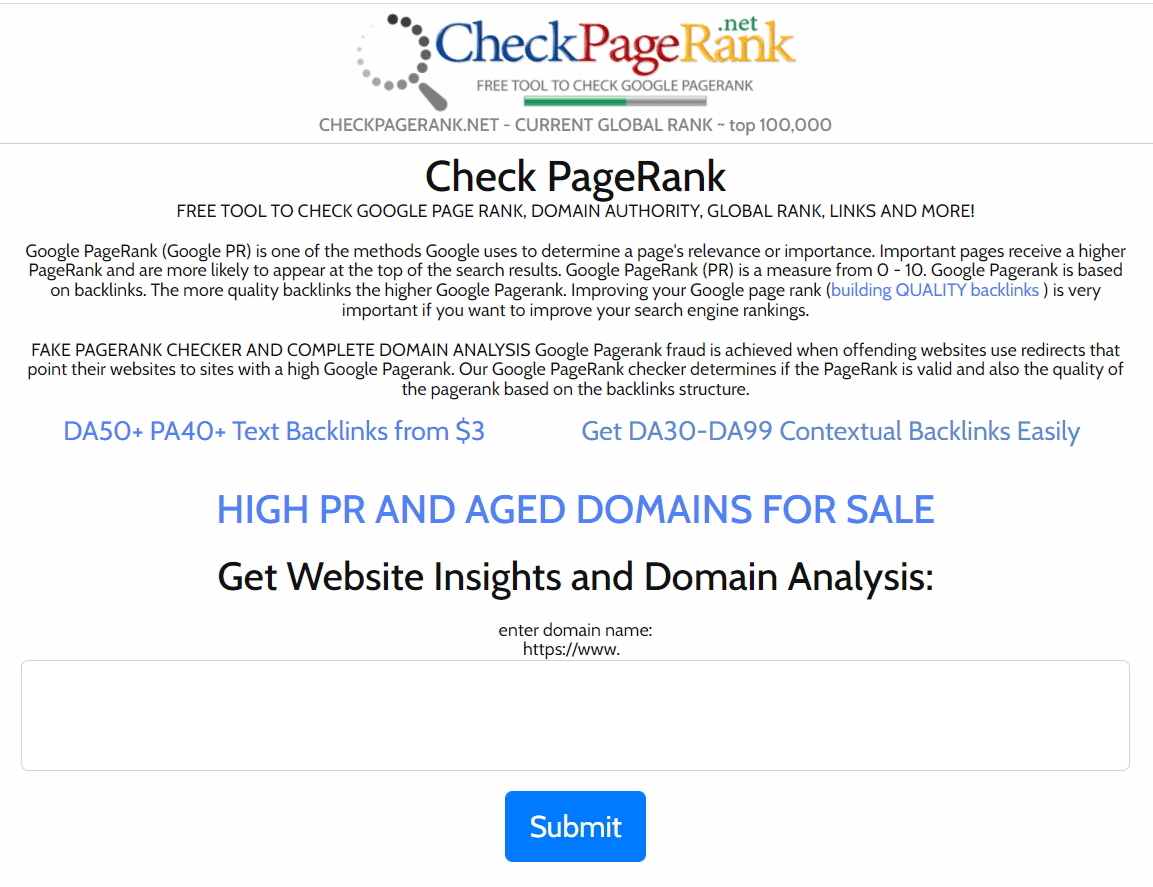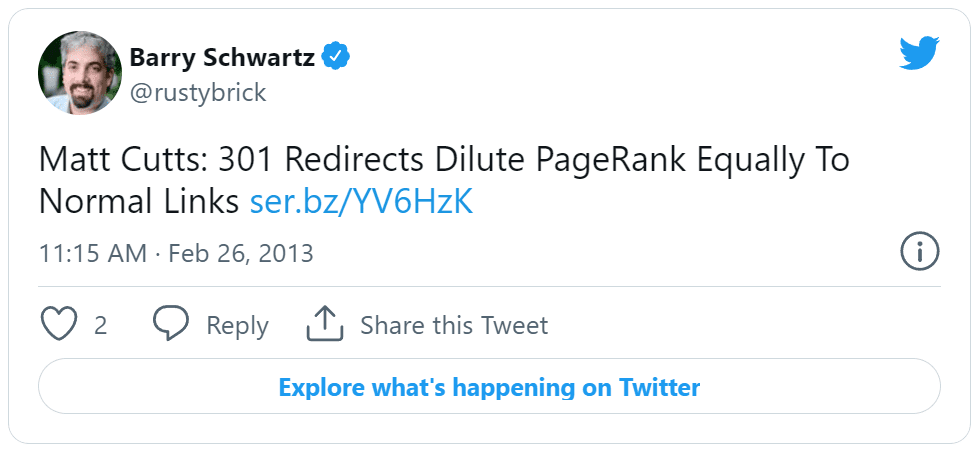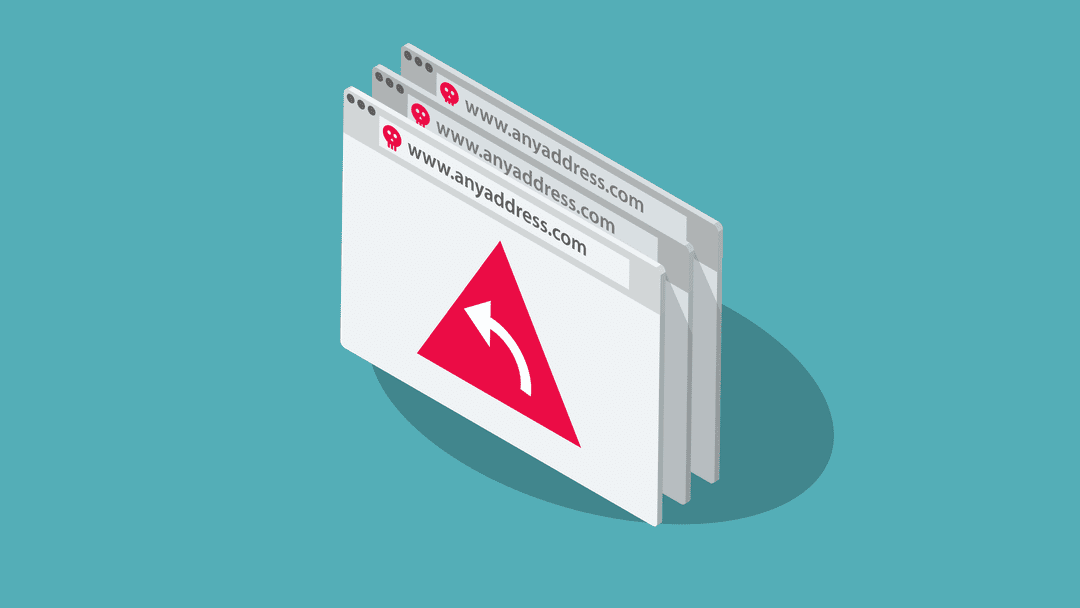There are several ways to redirect users and search engines from one URL to another. 301 redirects, in particular, tell browsers that a page moved permanently. That means the old URL isn’t in service anymore and that the browser can send users to the page’s new location. This setup can come in handy in multiple situations, such as changing domains, website structures, or just moving specific pages. But how do 301 redirects affect SEO? We’ve got answers to that question, as well as some alternative methods below. Let’s get to it!
What Is a 301 Redirect?
Sometimes, you’ll (attempt to) visit a specific URL and end up on an entirely different page. That’s not because your browser is faulty, but because you’re running into HTTP redirects. A redirect is a protocol that tells your browser that it should look elsewhere for the content you need, and then it sends you to that new destination.
Redirects are very common on the internet.Everyone has, at some point, been taken from one place to another through one. There are several reasons why you might need to use redirects within your website. Some examples include:
- Changing domains. When users visit the old domain, a 301 redirect can send them directly to your new site.
- Moving a page to a new location. If you change a page’s URL, you might have users who bookmarked the old address. A 301 redirect can prevent those readers from finding a 404 error.
- Deleting a page. Using 301 redirects can help point users toward other useful parts of your website after deleting pages. That way, readers won’t run into a blank page or 404. You might have also deleted the page and need to redirect someone to its replacement.
The “301” part of the redirect is a specific code that tells browsers and search engines why you’re pointing visitors to a new URL. 301 redirects are considered permanent redirects (there are temporary ones, too, under the code 302). Being a permanent redirect means that the old URL will not be working or hosting anything anymore. That everyone should forget about it.
For users, having a 301 redirect gives them a chance to delete or update their existing bookmarks and links to that URL. Additionally, 301 redirects are also incredibly important from an SEO perspective.
Search engines factor your domain and URLs into their rankings. When moving a page, you’re essentially telling search engines, “I want you to forget about this URL and pass on its ranking to this new address”.
Implementing 301 redirects in WordPress is relatively simple. However, before you start tweaking your site’s .htaccess file, you’ll need to understand how these redirects can impact SEO.
Do 301 Redirects Impact SEO?
If you look online for information about 301 redirects (which you’re already doing), you’ll likely find a lot of controversy surrounding their impact on SEO. That’s because up until a few years ago, implementing 301 redirects could lose you a significant part of a page’s ranking.
To be clear, the specific details of all the different search engine algorithms are not public. Google won’t ever spill their guts on that. However, we do know many of the search engine ranking signals. We can see how pages, posts, and websites change in rankings over time.
For example, Google ranks pages using an algorithm called PageRank. Until 2016, you could easily check any page’s PageRank score with any number of online tools, some of which are still around. (But they don’t work anymore.)

PageRank scores play a significant role in the 301 redirects SEO controversy. You could easily check PageRank data for any page. So it wasn’t long until people noticed a direct correlation between 301 redirects and decreasing scores.

For a while, it was generally accepted that implementing 301 redirects could dilute your PageRank score up to 15 percent! Because of that, sites would see that translated to a drop in search engine rankings. The problem only compounded with chain redirects, with each URL within the chain further harming the PageRank score.
The exact correlation between PageRank and rankings still isn’t public knowledge. However, the debate grew to the point where Google updated its algorithm so 301 redirects would not negatively impact PageRank scores.

Although you can’t view PageRank scores anymore, Google’s official stance confirms that 301 redirects don’t impact SEO. You will, however, need to set them up correctly.
How to Use 301 Redirects to Boost SEO
301 redirects don’t negatively impact SEO anymore. Which in the SEO world means that as long as there’s no direct negative, there’s a positive somewhere in there. Turns out, you can actually use 301s to improve your website’s ranking. The following are some of the most common tips for using 301 redirects to boost your site’s SEO.
Consolidate Poorly-Performing Posts
As your blog grows, you’ll likely notice that some posts perform better than others. They bring in more traffic, get better rankings, and are worth their weight in gold. However, many posts only attract modest traffic. That may be due to poor optimization on your end or just a lack of reader interest.
You can simply let those middling posts be and call it a day. But why would you? The better alternative is to combine multiple posts. If they with the same subject, combine them into a single, long-form article that can beat anything from your competitors. In a nutshell, you’re using the Skyscraper method and combining it with 301 redirects. Think about it as adding a few new floors to an already-great building.
Once you have a consolidated post, your best bet is to shift the traffic from the original articles to the new one. That’s where 301 redirects come in. By implementing them, you can combine each original post’s traffic and point it toward the new and improved content. Formerly, website owners had to reach out to places that provided backlinks and ask for an update. When 301 redirects became usable in this way, the quality of life for SEO professionals became much better.
Consolidating content can be a powerful SEO move if you have an extensive post library. As that catalog grows, you’re bound to publish articles on topics that overlap. Using 301 redirects can help you maximize that content’s potential. It also avoids issues with duplicate content and keyword cannibalization.
If you are using WordPress, then you’ll want to set up 301 redirects each time you consolidate a post. The Yoast SEO plugin makes that easy, and it’s what we use on our own blog.

If you ever need to delete pages or posts in WordPress, it’s important to consider what happens to their traffic. Simply removing those pages means that users will run into 404 errors if they try to visit them. They can’t be found because they don’t exist.
Sometimes it’s best to simply delete a page and let it go. In that case, you can use a 410 header that tells browsers and search engines, “This page is gone, and it isn’t coming back”.
An alternative is to redirect 404 pages to another URL. This method is especially useful if you have relevant content that the reader might benefit from. Let’s say, for example, that you have a page dedicated to showing your business location. If you delete it and include that information on an “About Us” or “Contact Us” page, a 301 redirect will help you pass on domain authority or PageRank. It will fill the same search intent the user had for the original page.
What Not to Do
It’s a bad idea, however, to redirect a 404 to an unrelated article. Google and other search engines look down on that, and they will not pass link juice for an article on hamburger seasoning to an article on tabletop roleplaying. They’re unrelated. The search engines may see that as gaming the system and could penalize you for it.
We’ve seen over time that 301 redirects don’t pass on all the PageRank from one page to another, but they don’t take away any authority either. As long as the pages are related, using a 301 redirect is better than displaying a 404 error. And if you really want to ever avoid a 404, you can use a 301 to redirect back to your homepage. If your homepage is unrelated to the article, a more in-depth site audit should be performed.
Use 301 Redirects to Change WordPress Permalink Structure
When you first set up a new WordPress website, you’ll need to decide on a permalink structure. Your chosen option can make URLs look more accessible and SEO-friendly.
If you decide to change the permalink structure after your site has been up for a while, you might need to implement 301 redirects. That’s because search engines have already crawled and ranked your content. Suddenly changing permalink structure is akin to moving all of your posts to different URLs.
That sudden change can impact page rankings. Using 301 redirects in that scenario will help you avoid losing rankings. However, the smart move is to pick a great permalink structure early on and stick with it. This kind of redirection campaign can take a long time, requires a lot of time and energy to make sure the transition happens smoothly, and can potentially lower your rankings because of the not-passing-along-link-juice issue.
Do Other Redirects Impact SEO?
301 isn’t the only type of redirect code that you can use. Other HTTP redirects give browsers and search engines different kinds of signals. They each have their own uses for improving your site’s SEO.
- 302 “Found” redirect. This type of redirect tells search engines that the page moved temporarily. That means Google won’t treat the new URL as “canonical” since it’s only temporary.
- 307 “Moved Temporarily” redirect. This is another type of temporary redirect. It offers some technical improvements over the 302 option.
- 308 “Permanent” Redirect. Just as with 307 redirects, the 308 status offers some technical improvements over 301 redirects. However, 301 is the standard for permanent redirects.
From an SEO perspective, temporary redirects can pass on some link juice. However, they also tell search engines that the new URL isn’t canonical. In practice, you can use temporary redirects for testing purposes. Still, they won’t pass on the same amount of link juice (if any) that a 301 does. Being told that the redirect is temporary also prevents the search engine from indexing the target page, but will keep the primary URL as the one that shows in results.
Temporary redirects are also easier to set up. You can quickly implement them using JavaScript or meta tags. 301 redirects, on the other hand, require you to use WordPress redirect plugins or modify core files like .htaccess that not everyone is comfortable doing.
Conclusion
Using 301 redirects to optimize your site shouldn’t impact your SEO negatively. In contrast, they can help you consolidate content, move domains seamlessly, and update your WordPress permalink structure. They also tell search engines to pass authority and PageRank from one URL to another, meaning your rankings shouldn’t suffer.
Temporary redirects don’t pass on as much link juice. They can be helpful for testing purposes, though. However, if you’re planning to move a page or a post permanently, you’ll need to implement 301 redirects.
Do you have any questions about how 301 redirects work with SEO? Let’s talk about them in the comments section below!
Featured image via Tomas Knopp / shutterstock.com









Finally, after going through 30 posts I found the answer I needed. If redirecting an old post to an updated and longer post would be good for my SEO. Thank you 🙂
This is blog post has been very helpful to me. Will you’re a star!
Thank you Will, this is an excellent article about 310 redirects to better understand it.